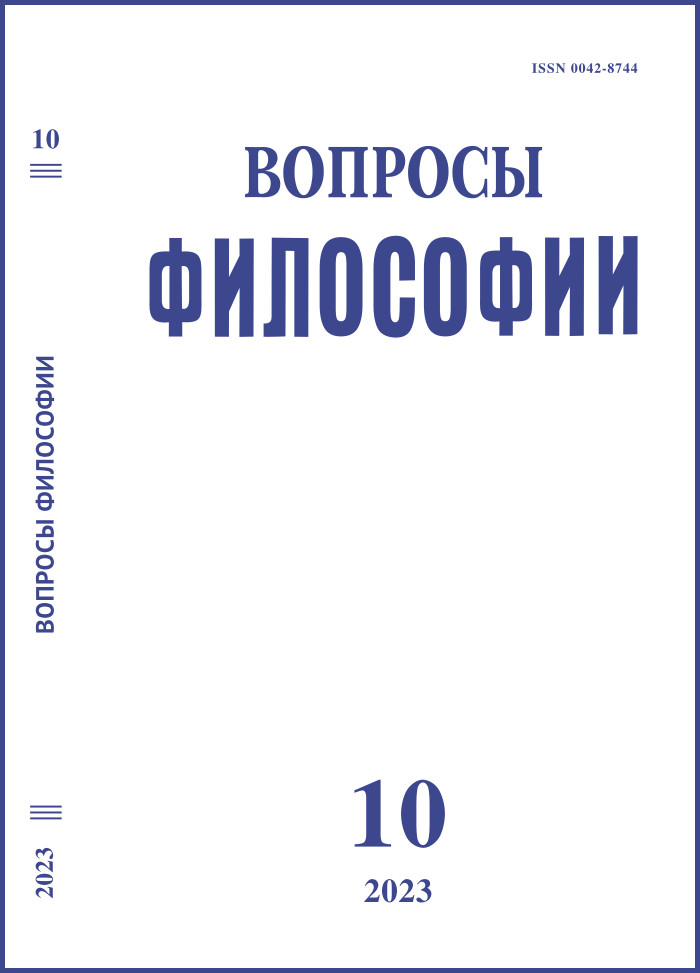Концепция «места» Накамуры Юдзиро
DOI:
https://doi.org/10.21146/0042-8744-2023-10-169-180Ключевые слова:
Нисида Китаро, Накамура Юдзиро, «место», онтогносеология, символическое пространство, топос, здравый смысл, «предикативный мир».Аннотация
Идеи Нисиды Китаро, в частности его концепция «логики места», оказали значительное влияние на многих японских философов ХХ в., причем не только принадлежавших к Киотоской школе. Можно сказать, что сама категория «место» приобрела статус универсальной когнитивной (онтогносеологической) метафоры, широко применяемой в самых разных контекстах. Накамура, как и многие другие современные японские философы, использует понятие «место» как рамку, позволяющую рассматривать реальность как динамическую сеть многоуровневых связей и взаимодействий. Труды токийского философа Накамуры Юдзиро, творчество которого пришлось на последнюю треть ХХ – начало ХХI в., представляет собой яркий пример дальнейшего развития теории «места» на современном уровне, подтверждающий ее эвристические возможности. Статья посвящена анализу взглядов Накамуры в его книгах «Теория топоса», «Теория здравого смысла» и «Предикативный мир и системы», которые демонстрируют эффективность применения топологических метафор в различных областях как естественнонаучного, так и философского знания, внося вклад в развитие современных онтологических и гносеологических теорий. Проведенное исследование демонстрирует потенциал азиатских философских традиций, который должен учитываться в решении проблем, стоящих перед современной философией.

